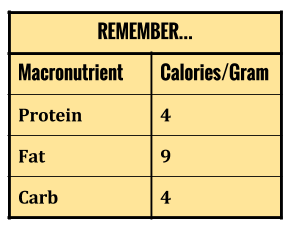Rule #1: Don’t revamp your diet using a “cleanse,” “detox,” or “challenge” template.
Let me explain.
The other day, Pat, Som, and I did a FB Live in which we discussed the benefits of a short-term challenge. We concluded that, regardless of how silly the cleanse or detox might be, if it jump-starts your success or in any way provides impetus for your goal achievement, then…well…then, you don’t suck.
[If that sounds offensive, you don’t know the half of it. Check of the video, literally titled Why People Suck and How Not To.]
So, firstly, just know that I’m not against these approaches as tools. However, my concern is this: After the 3-day cleanse or the 21-day challenge…what then?
How do you move from that short-term fix to a long-term, sustainable, nutritionally sound way of eating?
Unfortunately, I could not title this blog post “4 quick & easy steps…” because I then wouldn’t be able to sleep at night, knowing that I lied to you like that.
If these steps were quick and easy, I think more people would go through them. But they aren’t. They are a bit of a tedious, lengthy process.
They require that you sit down and dig in–really work it out. And after you go through the process once, you probably won’t be completely done with it.
But the process is worth it. It is oh-so-worth it.
Especially if you are looking for a long-term solution.
Below, you’ll find the methodology for creating an effective fat-loss nutrition plan based on your typical, comfortable patterns of eating.
Whereas a challenge often iterates, “scratch everything you’ve been doing and do this instead,” the steps below reveal a way to use your typical diet as your starting place, so that you are revising and building from a framework that feels natural.
Therefore, your sustainable nutrition plan will take into consideration all the things you typically eat and enjoy eating!
Before I begin, one more reminder that, if you’ve been struggling with lifestyle diet changes, THIS. IS. WORTH. IT.
Now we shall commence…
“A somewhat lengthy step-by-step guide to creating a sustainable nutrition plan for sustainable fat-loss”:
- Track what you typically, enjoyably eat in a week. Make a table (like the one below) and track every single meal, snack, and drink you consume. Track it for an entire week. Document food itself, amount, total calories, grams of protein, grams of fat, grams of carbs.

- Next, you’re going to make two columns. First, you’ll find your “standard” nutrition profile. Then, you’ll find your “ideal” nutrition profile.
- For the first column, figure out what your normal daily calorie consumption is. Figure out what your normal daily macronutrient ratios are. (It should look kind of like the one here…)

- For the second column, use a calorie calculator to determine the number of calories you should be consuming each day, and write that on the first line. (If the difference between current caloric consumption and recommended caloric consumption is huge, drop your calories gradually. Decrease a few hundred daily for a week, then a few hundred more for another week, etc. until you level out.)
- If you want to lose fat, calculate 1 gram of protein for every gram of body weight. (If you weigh 160lbs., your “ideal nutrition profile” should account for 160g of protein.) This specific diet focus, in fact, is so advantageous for fat loss that most beginners would see great success even if they just stopped here.
- Next, we need to tweak fat and carbs. By looking at your norm, you’ll be able to tell whether you favor fats or favor carbs. (Or perhaps you’re 50-50!). For “Trial #1,” stick with the same proportion of fats to carbs. That’s what you like, so let’s start there! Your two-column chart might look like this:

- Looking at your first column and your week of food logging, determine what stays and what goes or gets substituted. Maybe you need to switch full servings of grains to 1/2-servings, maybe you need to swap a some veggies in place of some grains, maybe you need to add extra doses of protein, maybe you need to switch to plain yogurt with fresh berries rather than the fruity store-bought variety.
- Within this framework, write an ideal day’s food consumption. Then, write a few variations of it. One morning it’s 2 fried eggs, the next it’s a two-egg omelette (or maybe it’s 2 fried eggs with cheese the first day, and a three-egg omelette the next). Think about swaps that are relatively straightforward in regard to macronutrients. One day have oil and vinegar and walnuts on your salad; the next, have avocado and a few crumbles of feta.
DID YOU KNOW…?! This online tool allows you to search for foods with similar macronutrient distribution. If you want to substitute another protein/fat source for an egg, for example, you find the macronutrient profile of an egg and then use the tool to find a list of other foods that fit that same profile. Find an amount of the new food that equals roughly the calories of the egg, and you’ve got a match!
9. If you hit a plateau or want to reach a new goal, all you need to do is revisit your two frameworks–your “typical” and your “ideal,” and revise your calorie intake and/or macronutrient ratios. To kickstart fat loss, I’d recommend fiddling with the macronutrient ratios so that you decrease carbohydrate intake and replace those calories with fat and/or protein.
If this seems exhaustive or strikes you as nearly impossible, consider this:
When it comes down to it, we probably eat 80% of the same things every single M-F and maybe 60% of the same things every Sat-Sun.
Ok, so that statistic above is totally observation and not at all based on actual science…
But the point is, once you gain familiarity with the general macronutrient content of your typical food choices, there’s little effort involved. Sure, you spend a week or two looking up the macronutrient content of every single thing you put in your mouth, but, honestly, you’ll be amazed at how few unique food items that actually is. You’ll easily memorize your standard meals, and after a short period of measuring and logging, you’ll be able to eye-ball and guesstimate without much trouble.
Before long, the whole thing becomes second nature.
PLUS, once you get used to this way of thinking through substitutions (exchanging servings of fats, proteins, and carbs for similar variations), it’s super-flexible.
Did I convince you? Do you feel ready to finally flip the switch from dieting to nutritional planning for sustainable fat loss?
If so, here’s your new “21 -day challenge”:
Rather than building a nutrition plan from the ground-up, creating from scratch a brand new way of eating by starting with all of the things you feel you *should* be eating, try the above approach.
Spend 7 days tracking, 7 days trialing, and 7 more days tweaking, and you’ll get more than a short-term “fix.”
…
Since you’ll be needing to spend a good bit of time dialing in your nutrition, go ahead and devote some of your scheduled workout time to sludging through the process.
I’ve got your calorie-burn covered with this super-efficient workout:
5-Minute Sweaty
Set a timer for 5 minutes, and go hard the whole time.
50-yd. sprint using a crawling pattern of your choice;
50-yd. brisk-walk back
With R leg planted, 5 reps each of front lunge, side lunge, reverse lunge;
5 jump squats;
With L leg planted, 5 reps each of front lunge, side lunge, reverse lunge;
5 jump squats;
Repeat, decreasing reps by one each round.
This one is great to run on repeat for 10-15 minutes. Track your progress by tracking number of rounds completed in a given amount of time.
Stronger Every Day,
Alyssa
P.S. If you like quick and intense workouts like the one above and also have a kettlebell or two, be sure to grab Pat’s NEW FREE E-BOOK, How to Burn Maximum Calories in Minimum Time.
